Over the past few years there has been a lot of discussion around the development and use of e-textiles. E-textiles typically take the form of yarns, threads and fabrics that have conductive properties i.e. they conduct electricity.
The different materials can be conductive, resistive or piezo-resistive. By putting these materials together in different combinations we can realise a variety of electronic components. We can arrange them to form wires, resistors, capacitors, switches and sensors (temperature or stress for example) etc.
Conductive threads can be woven or sewn into a fabric to electrically connect to components:
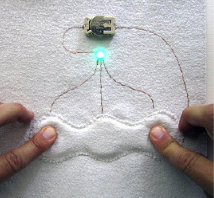
Here a battery is connected to a LED using conductive thread sewn in to a felt material.
There has been a lot of research into this area and many proof of concept projects undertaken to show how e-textiles might be used in the future to provide clothing that interacts or monitors a person wearing it. Also; there are clearly many medical applications in which such technology could be used to monitor a patients movement, temperature and other parameters in a convenient and comfortable form factor.
To date almost all of the demonstrations have used a combination of e-textiles and conventional electronics to provide the functionality needed:
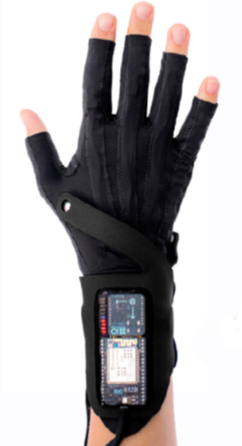
This is perfectly fine to prove a concept but the conventional electronics is clearly too large and too rigid to be of practical use in mass market applications. Furthermore it is not suitable for garments that are washed frequently.
To realise a truly durable and convenient solution then some other approach must be found……….
____________________________________
At the same time as the research into e-textiles was being carried out there has also been much activity in the field of printed electronics (also known as flexible electronics)
Printed electronics uses thin-film semiconductors to create flexible integrated circuits (ICs) that are thin, and significantly cheaper and faster to produce than silicon chips. The ultra-thin, ultra-low cost, flexible form factor makes it possible to embed them into almost anything, bringing connectivity and intelligence to everyday objects like clothes and other wearable items.
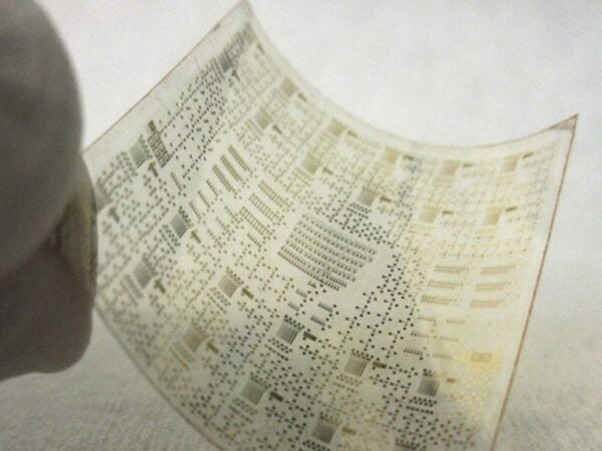
These flexible ICs can provide much of the functionality of conventional silicon ICs but importantly are light, thin and flexible.
We can also combine these flexible ICs with circuits printed on substrates only a few microns thick and if required combine them with a few conventional components that are small enough to be more or less invisible in a final solution.
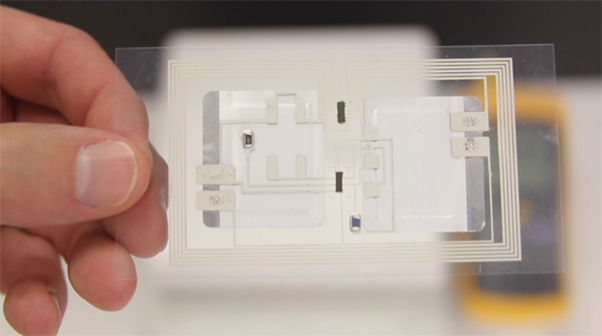
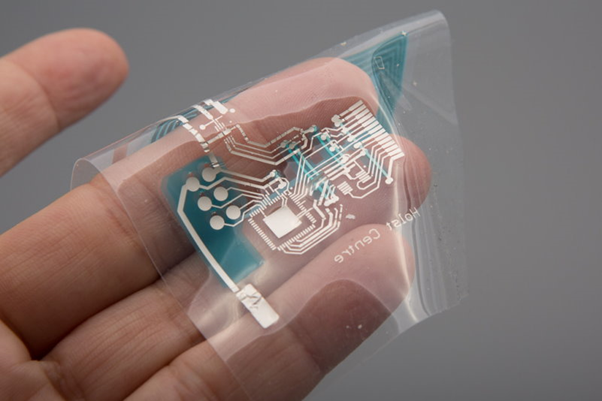
Now, getting back to our wearable e-textiles; if we take a printed electronics solution on a super flexible and super thin substrate and combine it with e-textiles we suddenly have a very powerful combination. A small printed electronics control module can be embedded in a garment and connected to sensors around the body using e-textile threads acting as wires. We can provide touch pads using conductive fabric, resistive and piezo resistive yarns to make sensors and LEDs has indicators all hidden away in a garment.
Because the printed electronics substrates are so thin we can sew the conductive threads directly to them forming the electrical connections we need to make the whole thing work.
By creatively combining different technologies a world of possibilities emerges. Touché Technology have worked with many customers providing this creative approach and produced innovative solutions.
To find out how Touché Technology can help you develop your next product call or email us today.
